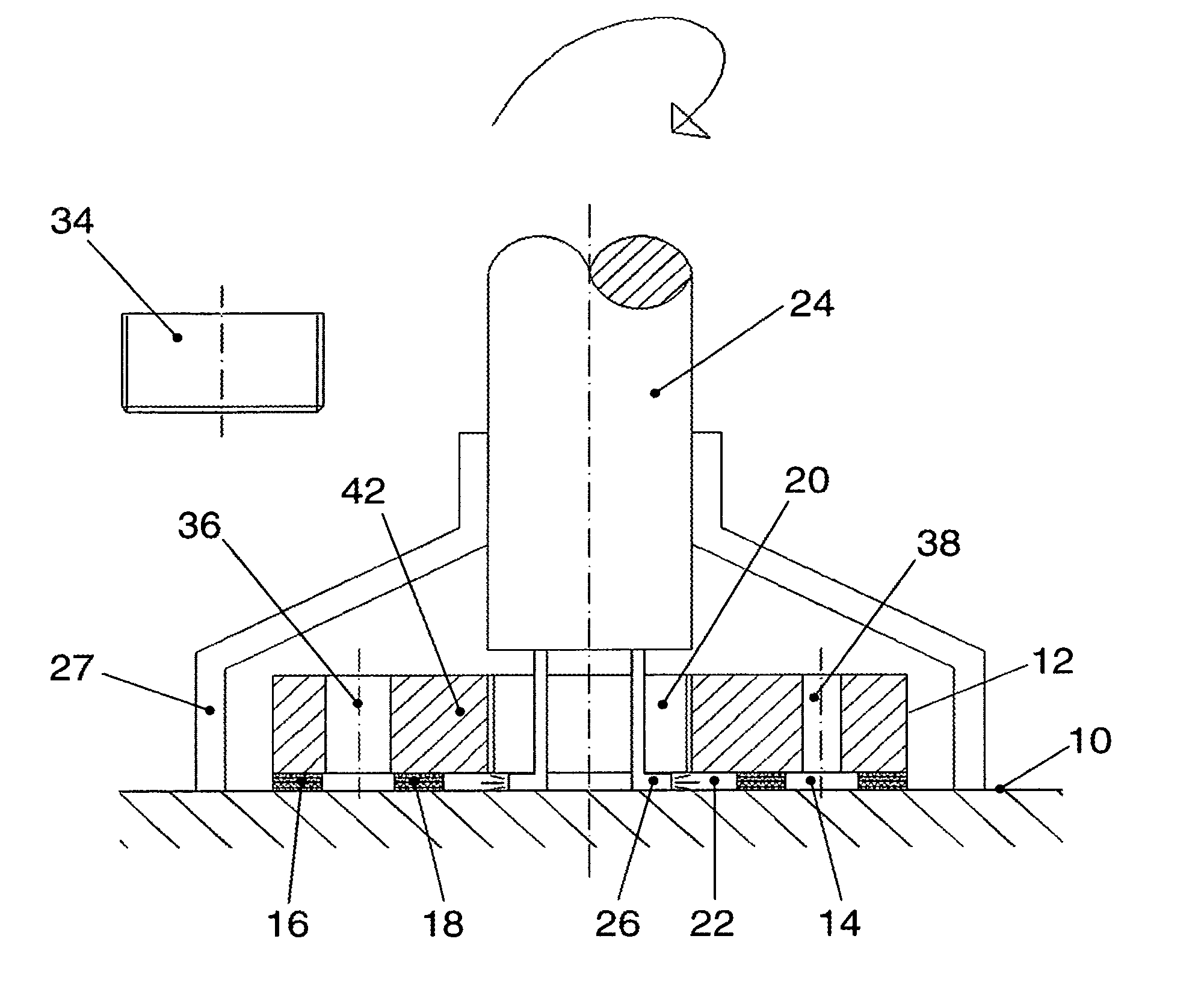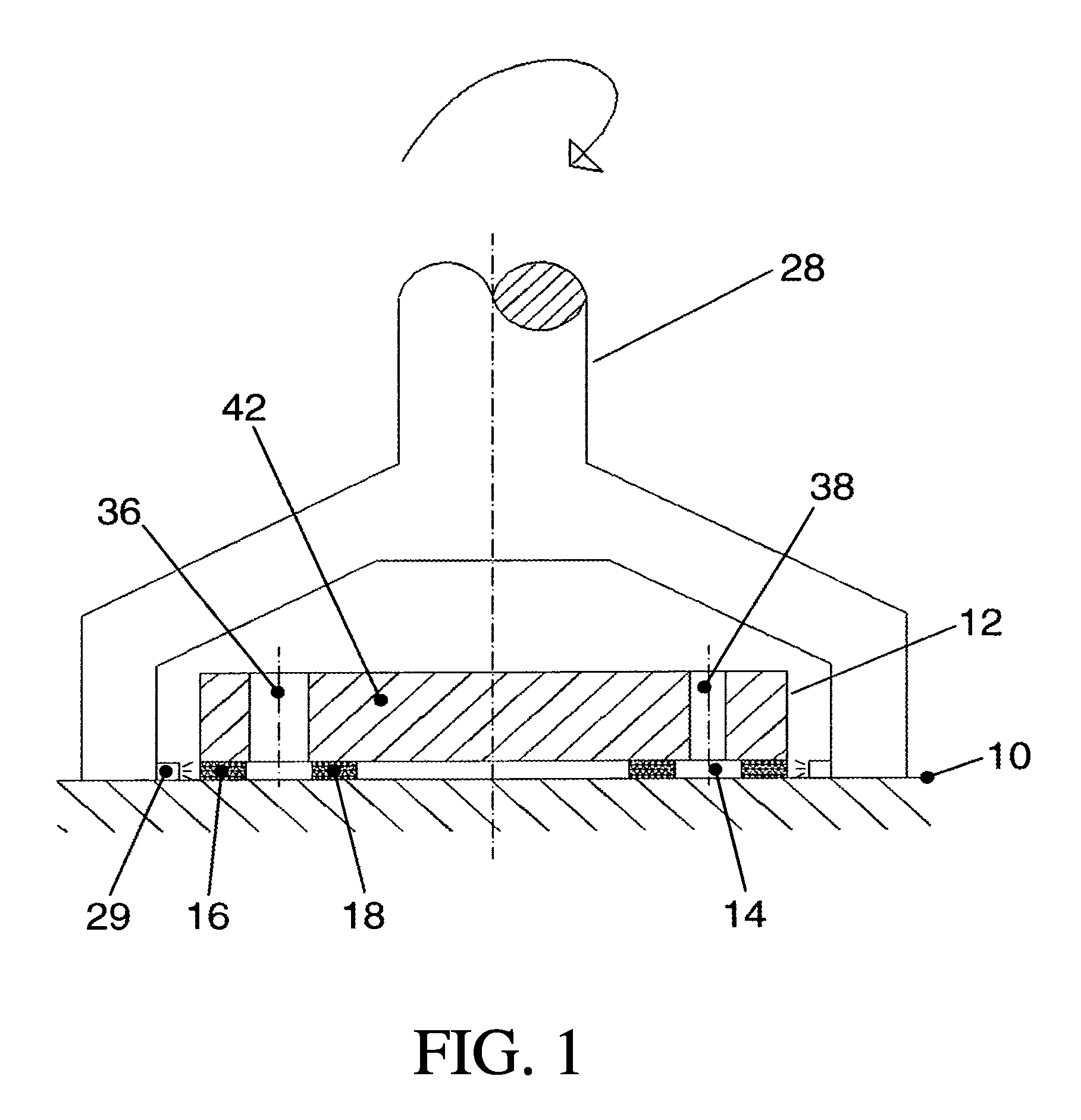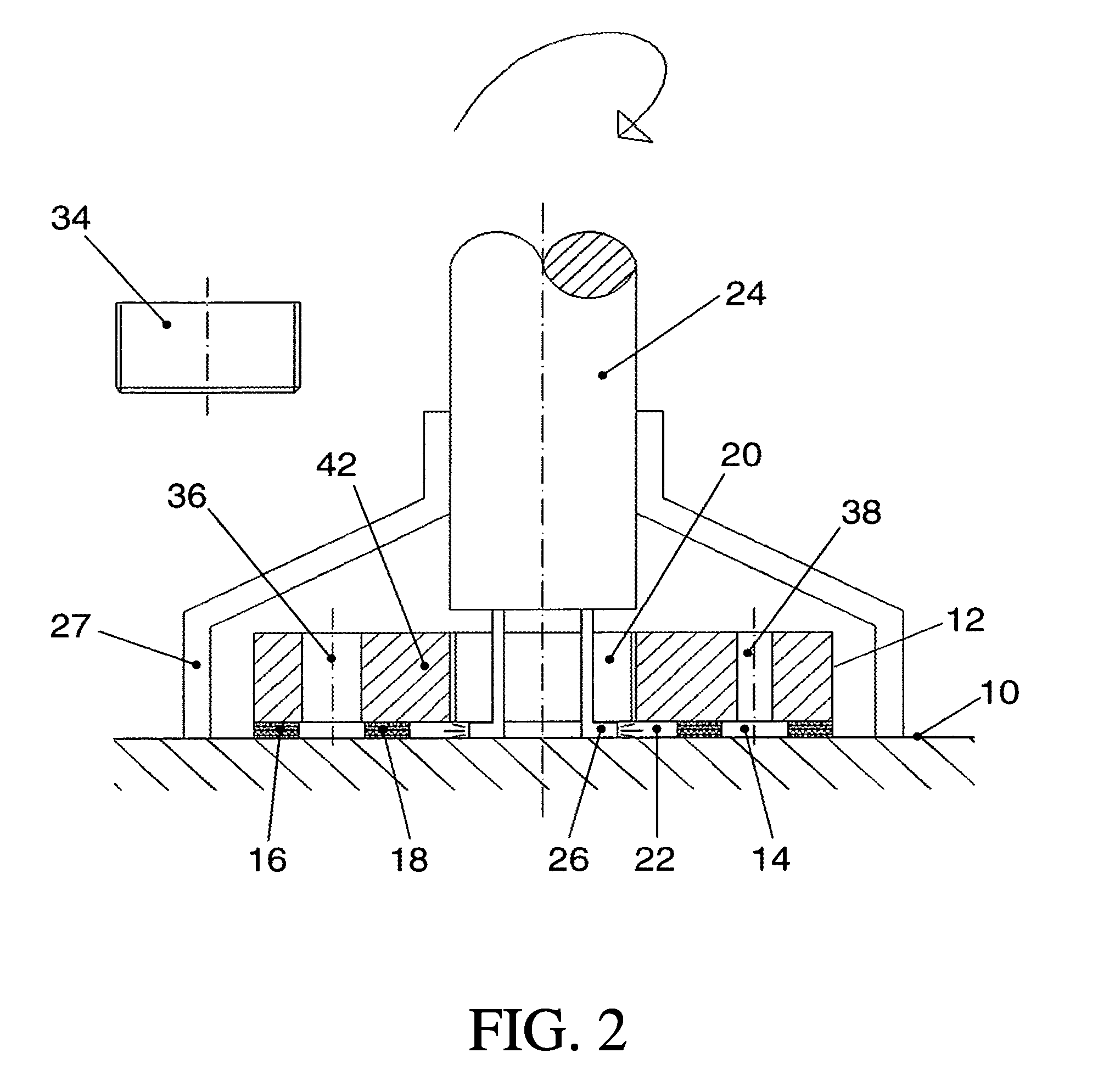Installation system for quickly attaching fastening elements by means of light-curing adhesives
a technology of light-curing adhesives and installation systems, which is applied in the direction of screws, furniture joining, material gluing, etc., can solve the problems of unsightly dowel holes that have to be filled, difficulty in attaching the fastening elements, and prior art that has not yet been solved, so as to improve the structural possibilities
- Summary
- Abstract
- Description
- Claims
- Application Information
AI Technical Summary
Benefits of technology
Problems solved by technology
Method used
Image
Examples
Embodiment Construction
[0043]FIGS. 1 to 8 show embodiments of the fastening element 12 that are given by way of example. This element consists of a main body 42, a first ring 16 and a second ring 18 and has an adhesive space 14. Serving for fastening the stationary objects to be mounted is a receiving element 34. This element may, for example—as represented in FIG. 2—be screwed to the main body or be detachably connected to the main body 42 by means of a riveted connection represented in FIG. 8. The fastening element 12 may also have an insertion opening 20, a filling opening 36 and / or a rising opening 38.
[0044]Both the first ring 16 and the second ring 18 have a rectangular cross-sectional area and are adhesively bonded to the main body. Both rings 16, 18 may consist of a transparent material, which is transparent particularly to radiation of the wavelength that leads to the curing of the adhering and connecting agent. Suitable materials for the rings 16, 18 are, for instance, glass, Plexiglas or transpa...
PUM
| Property | Measurement | Unit |
|---|---|---|
| wavelengths | aaaaa | aaaaa |
| wavelengths | aaaaa | aaaaa |
| waiting time | aaaaa | aaaaa |
Abstract
Description
Claims
Application Information
 Login to View More
Login to View More - R&D
- Intellectual Property
- Life Sciences
- Materials
- Tech Scout
- Unparalleled Data Quality
- Higher Quality Content
- 60% Fewer Hallucinations
Browse by: Latest US Patents, China's latest patents, Technical Efficacy Thesaurus, Application Domain, Technology Topic, Popular Technical Reports.
© 2025 PatSnap. All rights reserved.Legal|Privacy policy|Modern Slavery Act Transparency Statement|Sitemap|About US| Contact US: help@patsnap.com



